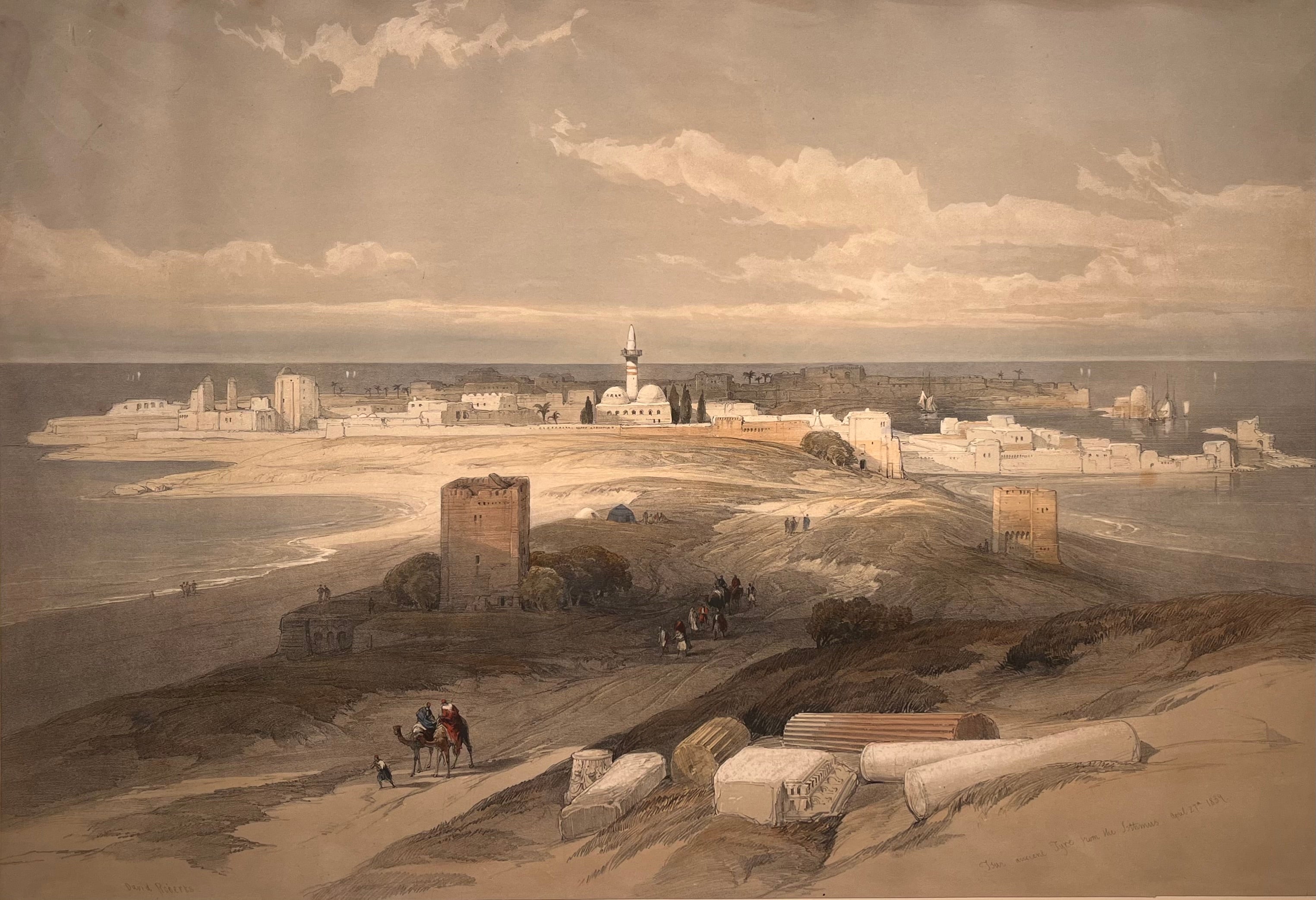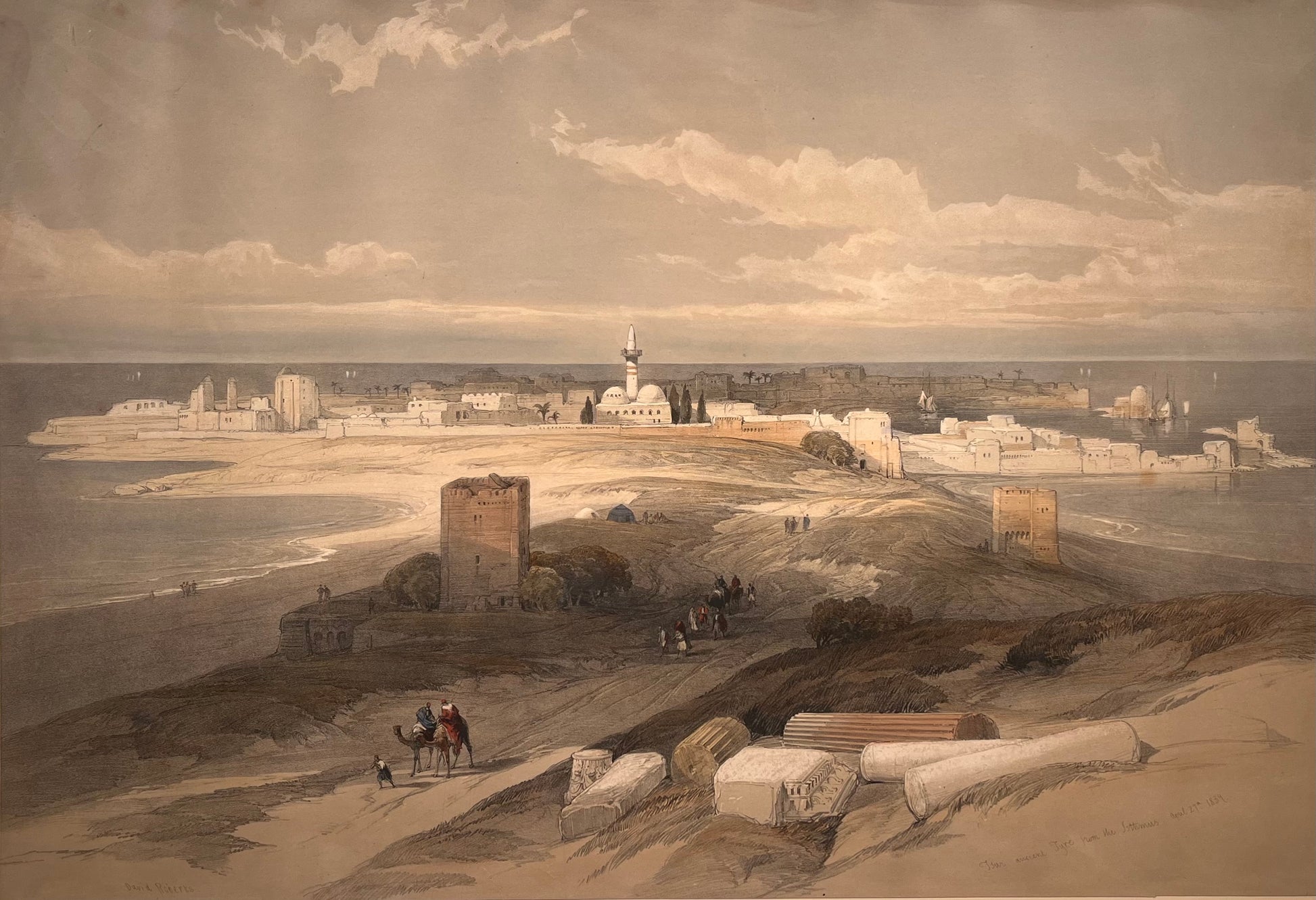

David Roberts RA
Tyre from the Isthmus
Subscription and first edition lithographs in stock
Full plate: 71
Presented in a acid free mount
This delicately coloured lithograph shows the port of Tyre, in Lebanon, located about 50 miles (80 kilometres) south of Beirut.
Tyre juts out from the Mediterranean coast and was once an island city. It was named Tyre (meaning rock) after the rock formation on which it is built.
Tsur, the ancient Phoenician city of Tyre, lies on the Mediterranean Sea and is reputedly the birthplace of Dido. Originally consisting of two distinct cities, one an island and the other on the adjacent mainland, Alexander the Great connected both communities by constructing a causeway during his siege of the city in 332 BC. Tyre was an important commercial centre in ancient times and was famed for its production of a rare purple dye, produced by sea snails, known as ‘Tyrian purple.’
Roberts arrived there, from the Cape Blanco, on the 26th of April and was to stay for just one night. He wrote in his journal: ‘Another hour’s ride along the sands brought us in front of ancient Tyre. In riding along, I could see fragments of the ancient village in places where the wind had cleared away the sand. The present town is a mere village, with a mosque rising in the centre…. Enormous pillars of Egyptian granite, some of them 10 feet in diameter, remains of the town’s ancient grandeur,’ however, ‘the city that sent out colonies to found Carthage is now little more than a naked rock in the midst of the sea.' Roberts’s viewpoint in the lithograph brings to life much of what he described. He stands on the isthmus (or narrow strip of land) and looks westward. The town is directly ahead - with the eighteenth century 'Old Mosque’ occupying the centre of the composition. To the left and right is the sea.

